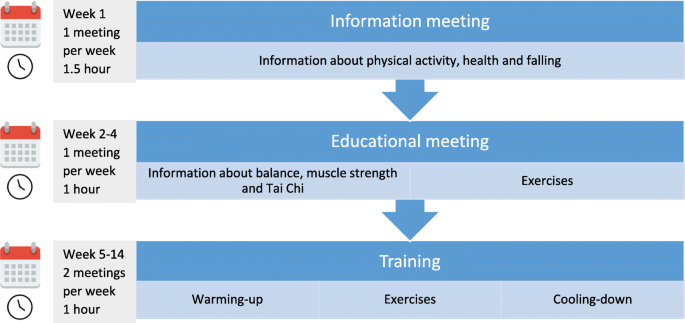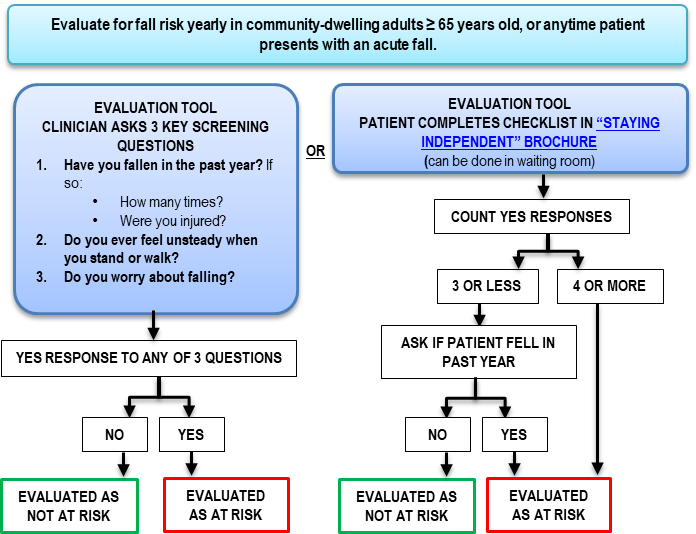Dementia Fall Risk for Beginners
The Buzz on Dementia Fall Risk
Table of ContentsRumored Buzz on Dementia Fall RiskSome Of Dementia Fall RiskThe Main Principles Of Dementia Fall Risk Excitement About Dementia Fall Risk
An autumn threat analysis checks to see just how likely it is that you will certainly fall. The analysis generally consists of: This includes a collection of concerns concerning your overall health and wellness and if you've had previous falls or problems with balance, standing, and/or walking.STEADI consists of testing, assessing, and treatment. Treatments are suggestions that may minimize your risk of falling. STEADI includes 3 steps: you for your threat of falling for your danger variables that can be boosted to try to avoid drops (for instance, balance troubles, impaired vision) to reduce your risk of falling by using efficient methods (for instance, supplying education and learning and sources), you may be asked numerous concerns including: Have you fallen in the past year? Do you feel unsteady when standing or walking? Are you worried regarding falling?, your copyright will certainly check your strength, balance, and gait, using the following loss assessment devices: This examination checks your stride.
If it takes you 12 seconds or more, it might suggest you are at higher danger for an autumn. This examination checks strength and balance.
Relocate one foot midway onward, so the instep is touching the big toe of your various other foot. Relocate one foot totally in front of the various other, so the toes are touching the heel of your various other foot.
Not known Facts About Dementia Fall Risk
A lot of drops take place as a result of several contributing variables; as a result, taking care of the danger of falling starts with identifying the variables that add to fall risk - Dementia Fall Risk. A few of one of the most pertinent threat aspects include: History of prior fallsChronic medical conditionsAcute illnessImpaired stride and equilibrium, lower extremity weaknessCognitive impairmentChanges in visionCertain high-risk drugs and polypharmacyEnvironmental variables can additionally increase the risk for drops, consisting of: Insufficient lightingUneven or harmed flooringWet or slippery floorsMissing or harmed hand rails and get barsDamaged or incorrectly fitted devices, such as beds, mobility devices, or walkersImproper use assistive devicesInadequate supervision of the individuals staying in the NF, including those who display hostile behaviorsA effective autumn danger monitoring program requires an extensive professional evaluation, with input from all members of the interdisciplinary team

The treatment strategy should also include interventions that are system-based, such as those that promote a secure setting (suitable illumination, hand rails, order bars, etc). The performance of the interventions should be examined periodically, and the treatment plan modified as needed to mirror changes in the autumn risk assessment. Implementing a fall danger management system using evidence-based best practice can lower the prevalence of drops in the NF, while restricting have a peek here the potential for fall-related injuries.
The Main Principles Of Dementia Fall Risk
The AGS/BGS guideline recommends screening all grownups aged 65 years and older for autumn risk each year. This screening contains asking people whether they have dropped 2 or more times in the past year or sought clinical focus for an autumn, or, if they have not dropped, whether they feel unsteady when walking.
People who have actually fallen once without injury must have their balance and gait examined; those with stride or balance problems need to obtain added analysis. A background of 1 autumn without injury and without gait or balance problems does not warrant further assessment beyond ongoing yearly fall risk screening. Dementia Fall Risk. A fall danger analysis is needed as component of the Welcome to Medicare evaluation

Getting The Dementia Fall Risk To Work
Documenting a drops history is one of the helpful hints top quality indicators for loss prevention and administration. A vital part of risk evaluation is a medicine evaluation. Several classes of drugs increase loss threat (Table 2). Psychoactive medicines specifically are independent predictors of drops. These medications tend to be sedating, modify the sensorium, and impair balance and stride.
Postural hypotension can commonly be alleviated by minimizing the dosage of blood pressurelowering medications and/or quiting medications that have orthostatic hypotension as a negative effects. Use above-the-knee assistance hose and sleeping with the head of the bed raised might additionally decrease postural reductions in high blood pressure. The preferred aspects of a fall-focused health examination are displayed in Box 1.

A TUG time above or visite site equal to 12 secs suggests high fall risk. The 30-Second Chair Stand examination evaluates lower extremity stamina and balance. Being not able to stand from a chair of knee elevation without utilizing one's arms indicates enhanced autumn danger. The 4-Stage Balance examination examines fixed balance by having the patient stand in 4 positions, each gradually more tough.